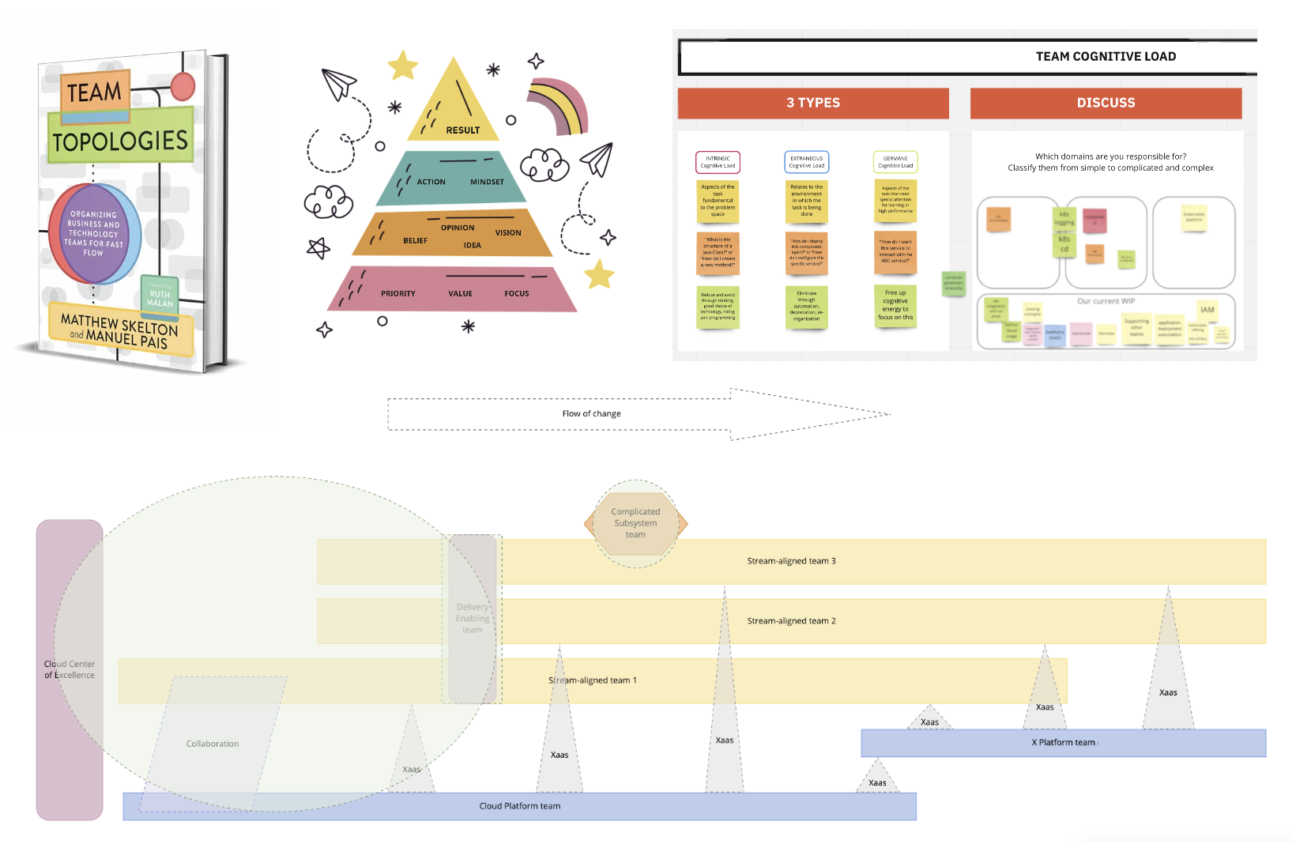
Team Topologies is a clear, easy-to-follow approach to modern software delivery with an emphasis on optimizing team interactions for fast flow. Devoteam’s Agile Coach Erica Engelen shares her experience with this methodology.
Last year, we designed a Cloud Strategy with and for one of our customers. We quickly agreed that the cloud would enable the company to achieve greater business agility, but that the ‘cloud’ itself was not the goal – nor was it the silver bullet solution. We had to look at the people (skills, autonomy, purpose ) and the processes (structure, communication) to figure out how this company could benefit from the possibilities of the new technology.
To get started and learn quickly, we decided to take a team-first approach. We started with the ‘Cloud Team’ to find a structure that would allow employees to work and communicate differently while enabling the adoption of the cloud platform. I work pragmatically with clients, I always bring a big toolbox and figure out what works for them. In this case, it was a great opportunity for me to put into practice one of my biggest recent discoveries: Team Topologies.
To quote the fabulous Manuel from Fawlty Towers, “I know nothing.” That’s the luxurious mindset I allow myself when I embark on a new adventure. I am confident that during the workshops, the team will figure out what it takes to get from where they are to a place of new possibilities.
Never ‘Done’
As an Agilist, I look for ways to simplify structures, but I also need to learn to understand the reasoning behind them. Team Topologies is the lightest approach I have ever used to help a team and an organization discover opportunities and obstacles to just ‘get going’. It’s not about designing the end goal or the ideal structure. That’s one of the things I love about simply adding the ‘flow of change’ to any structure you design. That way, you have to immediately accept that from the moment you design your structure, change will happen, forcing you to rethink everything.
Teach them to fish
During the workshops, the team learned how cognitive load, interaction modes, and mindset were impacting the value they delivered. Viewing the platform as a product – from the user’s perspective – brought a whole new set of requirements to the workload (as much self-service as possible), but also the realization that a ‘Thinnest Viable Platform’ that is as lean, simple, and user-friendly as possible will enable rapid adoption. All these elements will be constantly up for review during retrospectives. Team Topologies provides teams and organizations with simple concepts and vocabulary which can be put into practice easily.
Organizational Culture
I added some coaching techniques from my toolbox (results pyramid) to the workshop to help the team understand the many elements that contribute to their mindset and ultimately determine what they can achieve. It showed how siloed organizations fuel (unconscious) biases between people and departments, which immediately undermines open and transparent communication and collaboration.
Here you can see how Conway’s Law comes into play, which states that organizations design systems that reflect their communication structure. It’s remarkable how the interaction between teams can only work in practice if everyone is willing and able to break down existing walls.
Team Topologies is as disruptive as any other Agile approach. For an organization to acquire more business agility – to innovate – there must be the will to step outside of its comfort zone. An organizational culture that supports an open and trusted mindset is a prerequisite to going there. To uncover new ways.
Work in Progress
After three weeks and about six workshops, the team designed the first structure. It enables three Stream Aligned Teams to deliver services on a cloud platform, supported by an Enabling Team that fills competency gaps. There is also a Cloud Center of Excellence that relieves the platform team of Cognitive Load, evangelizes, and builds new bridges. At first glance, it may seem simple, but to achieve this, the team had to let go of a lot.
They are so dedicated and driven and needed to make hard decisions during the Cognitive Load exercise. They now have a backlog for two sprints in which they will deliver the Thinnest Viable Platform in production.
I’m thrilled to see how it motivates the team, gives them focus and purpose. The first design is just giving them a place to ‘Start’. To start doing, moving, and learning so that it can scale and grow.

Beyond technology
For this organization, for which cloud adoption was the starting point, Team Topologies was the perfect solution. Technology is the enabler, but processes and, most importantly, people drive your success. Although the technology aspect is very present in this book, I am convinced that the concepts work just as well for teams and organizations, whose focus is not on technology.
I’m curious to hear if anyone has experience with that!